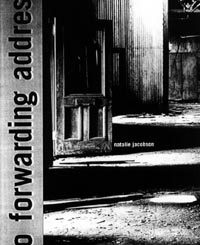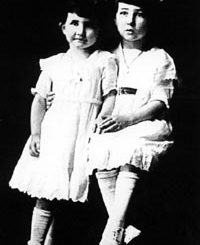 The Diving Bell and the Butterfly
The Diving Bell and the Butterfly
Written by Jean Dominique Bauby (Random House)
by Thomas Christian
As recently as 1996, if you were to glance at the portfolio of Jean Dominique Bauby, here’s what you’d find: Globe traveler, father of two, jet-setting editor-in-chief of a major French fashion magazine. His days were spent on assignment in the world of thigh-high-booted models with colorized eyes and surrealistic lips, where he oversaw the marketing of gaunt expressions, high cheekbones, and subtle hints of sexuality draped in ultramodern attire.
One day, in his 43rd year, while riding in a “gunmetal-gray” BMW, he is unwittingly thrust into a defining moment that alters his world forever. While the car radio pumps out The Beatles’ “A Day in the Life,” he senses something inside him is not quite right. As the song screams towards its grand orchestral finalé, his mind begins to fall in a beautiful slow motion ballet, an oblivion spiral in sync with the rising crescendo that builds and builds and finally, crashes. Sustaining a massive stroke, he subsequently slips deep into a coma.
Upon awakening some time later, he finds himself laid in the bed of a hospital room, unable to move or speak. Vision comes from his one working eye. Totally paralyzed, he later learns he is a victim of what is called “Shut-In Syndrome.” With no means of communication, he sets about creating a primitive form of contact. He and his therapist devise a special alphabet code on a screen in the hospital room whereby he can respond to questions and make dictations by blinking his one working eye at figures to create letters, words, phrases. This long, physically grueling effort lends itself to some hilarity – a comical montage of misspellings and incorrect communications – as well as to deep sadness; he can only listen as the one-way telephone conversations come from his 93-year old father, or his 8-year old daughter, trapped in the center and unable to grasp onto either; he is an observer of his own existence.
Weeks and months pass, and Bauby begins to see himself through the eyes of his visitors – friends filled with pity; a family he loves but cannot embrace; the business-as-usual staff of the hospital. As the circumstances grow more bleak and hopeless, he travels the path inside, where all dreamers dream: “My head weighs a ton, and something like a giant invisible diving bell holds my whole body prisoner,” he eyeblink-dictates to an aide, “and my mind takes flight like a butterfly.” Living inside his head, he conjures old memories, smells, tastes, and imagines their return; a gourmet feast fantasy is shaken alive from the brown nourishment liquid that runs through tubes to his stomach; the hospital balcony wheelchair-bound view of the distant beach becomes the setting of a scene from his directions, complete with stage blockings, cued lines, and running dialogue. In his mind, the ocean is an orchestra, and he the conductor, invoking a symphony that nobody hears. “I am fading away,” he writes, “slowly but surely. My old life still burns within me, but more and more of it is reduced to the ashes of memory,” as the sea crashes beyond his hospital window, its high and low tides a metaphor for his existence.
Bauby, who suffered the stroke in December of 1995, dictated these memoirs in painstaking fashion during a particularly creative spell in 1996, by blinking his one good eye at a makeshift alphabet screen on the wall of his hospital room. Two days after the original publication in his native France in 1997, Bauby passed away, memorializing these memoirs as the legacy of one man’s final testimonial of a life.



